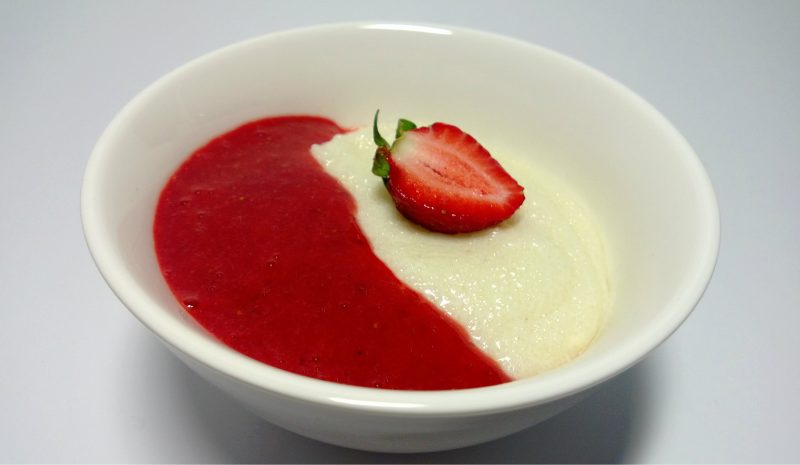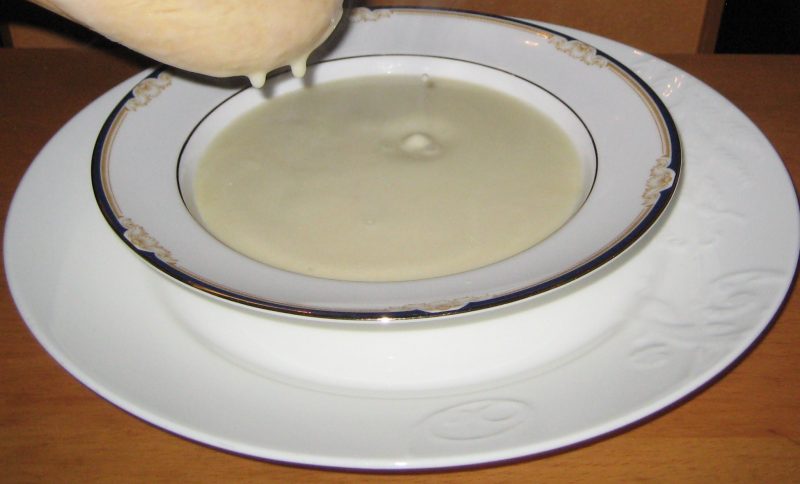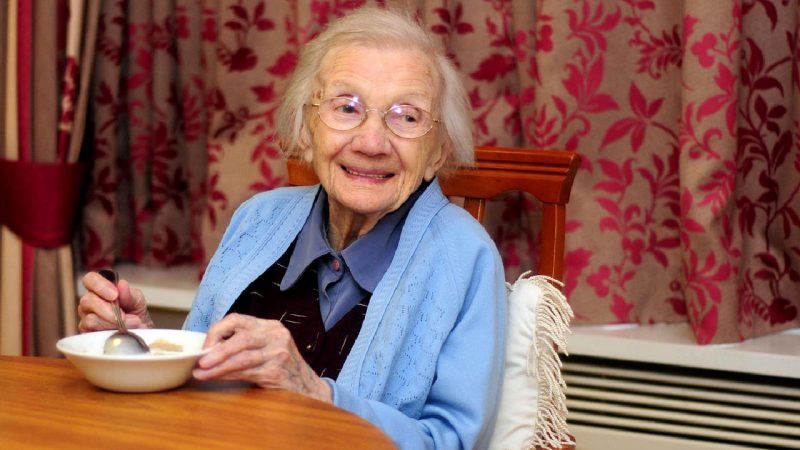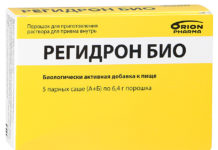If you don’t like semolina porridge, the benefits will be small: you simply do not know how to cook it. Any self-respecting cook will say so, because even ordinary semolina on milk can be tasty. This porridge, known to children of the post-Soviet space, is included in the menu of all kindergartens and school canteens. Millions of children can’t be given junk food - that’s the logic. Let's try to figure it out together.
Material Content:
The composition and nutritional value of semolina
Semolina is made from wheat at a grain processing enterprise. For the manufacture of take wheat kernels, purified from the outer shell. After grinding them, flour with grains of different fractions is obtained, which is then sieved. Coarse grinding - this is semolina.
At the core of wheat are the most nutrients and vitamins. Therefore, semolina is usually used in baby and diet foods.
For the production of this cereal, grains of hard and soft grades of wheat are taken.
The manufacturer indicates this by lettering:
- “M” means soft varieties;
- "T" - hard grades;
- "MT" is a mixture of varieties.
Semka brand "T" surpasses other types in protein content and cooks longer, after cooking it has a slightly granular structure.
100 g of semolina contains about 330 kcal, its composition includes such nutritional components:
- proteins - 10 g;
- fats - 1 g;
- carbohydrates - 70 g.
The amount of dietary fiber in comparison with other cereals is small - about 18% of the daily norm.
Useful properties and cooking features
Many housewives cook semolina incorrectly. It must be prepared on a mixture of water and milk, adding salt and sugar to taste.When the liquid begins to boil, pour semolina with constant stirring so that no lumps form. It is even more convenient to add the required amount of cereal to a cold mixture of water and milk, and standing at the stove, stir constantly until the porridge thickens.
After boiling milk, semolina needs to be boiled for two minutes, and then removed from the heat, so that the water is absorbed when the heating is already turned off.
Semolina porridge will turn out very tasty if you try an interesting and simple recipe:
- Melt a spoonful of butter in a saucepan without boiling.
- Pour 2 tbsp. l semolina. If you take cereals without a top into a tablespoon, there will be liquid porridge, with the top - medium density.
- Pass the semolina to a slightly golden color, stirring constantly.
- Pour 400 ml of water and 100 ml of milk (can be melted).
- Add a pinch of salt and 1 tbsp. l Sahara.
- Stir well so that there are no lumps, remove from heat 1–2 minutes after boiling.
- Let stand a little under the lid.
The semolina will turn out cream color with an unusual pleasant aftertaste. It is delicious and healthy to serve with nuts and fresh fruits.
The benefits and harms of semolina porridge
Numerous claims about the dangers of semolina porridge are dictated by commercial considerations of entrepreneurs. It may seem so if you look at the data on the chemical composition of semolina.
The semolina contains:
- essential amino acids;
- 7 vitamins;
- 8 macrocells;
- 14 trace elements;
- starch and dextrins.
Manka is rich in vitamin PP, cobalt, silicon, manganese and molybdenum, which play an important role in metabolism:
- Cobalt (250% of the norm in 100 g of cereal), promotes the metabolism of folic acid, is part of vitamin B12.
- Vitamin PP (15%) supports healthy skin, nervous system and gastrointestinal tract.
- Silicon (20%) stimulates collagen synthesis.
- Manganese (22%) is necessary for the formation of bone and connective tissue, participates in carbohydrate and lipid metabolism, is responsible for the normal growth of the body, and the health of the reproductive system.
- Molybdenum (16%) is part of many enzymes that provide amino acid metabolism.
The benefits of semolina for the body are obvious, but there are slight nuances. It also contains phytin, which disrupts the absorption of trace elements important for life and growth (Ca, Fe). This must be taken into account, including porridge in the diet of children.
For adults
For adults, semolina is useful as a source of carbohydrates. If it is cooked in milk, it is digested more slowly, has a lower glycemic index. The benefit of eating this dish is to effectively replenish energy costs. It is incorrect to consider semolina in the diet of an adult as a milk smear on a plate.
Krupa is a recipe for many dishes:
- puddings (the same porridge, only baked in the oven with cream or butter, egg, fruit);
- vegetable and meat patties;
- casseroles etc.
Semolina is included in many therapeutic diets. It positively affects a sick stomach, relieving inflammation of the mucosa. In some cases, it is cooked in a vegetable or fruit broth. Liquid semolina helps to leave the patient in the postoperative period, it is easily absorbed, satisfies hunger and restores strength.
It is undesirable to use this dish for those who suffer from diabetes mellitus or obesity. A large portion of the finished semolina without butter contains about 300 kcal.
During pregnancy and lactation
The menu of a woman during pregnancy and lactation should be especially carefully thought out. It may have semolina porridge in milk, but in a small amount - not more than 3 times a week.
Tasty recipe:how to cook semolina porridge in milk
To decide whether semolina should be included in your diet during pregnancy, it is worth recalling all its advantages:
- quickly satisfies hunger, is easily acquired;
- source of energy, certain vitamins and minerals;
- does not cause irritation of the gastric mucosa;
- inexpensively.
And disadvantages:
- may cause allergies;
- contributes to the development of anemia (oxygen starvation of the fetus);
- interferes with the absorption of calcium (the formation of the skeleton of the child is disrupted, the mom's teeth drop out).
If a woman does not want to eat porridge, then no reasonable arguments about partial benefit are powerless. This is uncritical: semolina is easy to replace with another dish, more useful during pregnancy and lactation.
For a child
Parents feed manna porridge to many children, claiming that it is very healthy. Indeed, semolina has the ability to swell well, so for a long time it creates the illusion of satiety. Effectively feed such baby porridge for dinner. He will not wake up at night with a feeling of hunger. And the whole family will be able to sleep well until morning. But nutritionists do not recommend giving semolina to babies under 10 months old.
This cereal has a lot of gluten - gluten protein. Some children have congenital intolerance to this substance. If they begin to receive products containing gluten for up to 10 months, this will lead to serious metabolic disorders and gastrointestinal diseases. If the child does not have gluten intolerance, he can eat semolina several times a week.
Decoy for the child should not be present in the daily menu. This can lead to the development of such a dangerous disease as rickets (due to impaired absorption of calcium in the digestive tract). Even if the baby does not develop an ailment, his bones will be fragile. The sad consequence of the semolina diet will be numerous fractures in primary school and adolescence.
For the elderly
Semka is useful to older people in a small amount. This product does not irritate the stomach and intestines. Liquid semolina on water is a dietary product with digestible carbohydrates and a delicate texture. Such a dish is included in the diet of weakened people who have undergone surgery, suffering from gastritis or a stomach ulcer.
Keep in mind that with age, the digestibility of gluten decreases. This protein is found in semolina and can cause severe allergies, constipation and other organic disorders.
Contraindications
The use of semolina in some cases can adversely affect health.
Here is a short list of those who should exclude this dish from their menu:
- children under 10 months (some nutritionists believe that it is better not to give decoy to babies under 3 years old);
- patients diagnosed with celiac disease;
- overweight people;
- diabetics.
Everyone else often has semolina porridge undesirable because of its special composition. In semolina there are phytins that bind calcium. Calcium deficiency leads to bone fragility. In children, the constant use of semolina can lead to the development of rickets. After the entry of semolina into the body, not only calcium absorption is disrupted, but also iron, which leads to the development of iron deficiency anemia. This condition is especially dangerous during pregnancy.
Knowing the features of semolina porridge, you can protect yourself and your family from many health problems caused by malnutrition.




















